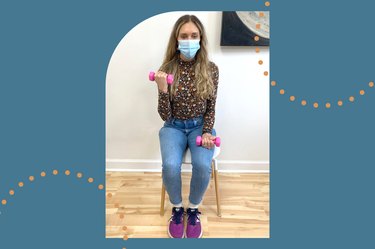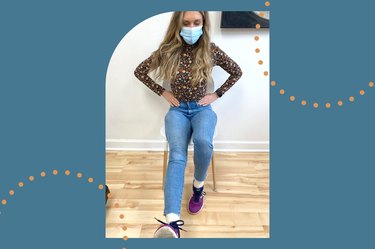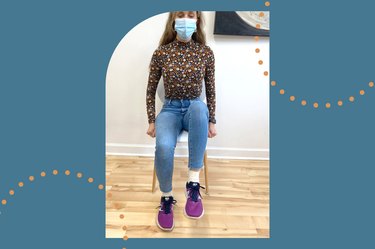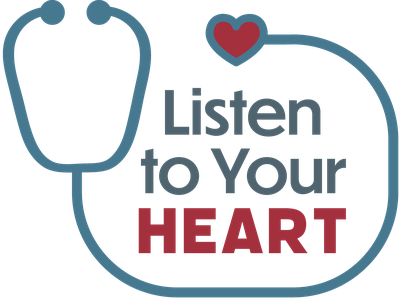
Although plenty of research connects exercise to a healthier heart, if you've recently had a heart attack, you can't just hit the gym at full force. Your heart has been through a traumatic event, and that means recovery needs to be gradual, says doctor of physical therapy Samantha DuFlo, PT, DPT, of Indigo Physiotherapy in Baltimore.
Ideally, you'd also be supervised in the early stages of your recovery.
Video of the Day
Video of the Day
"If someone has experienced a cardiovascular event, such as a stroke, heart attack, or has a complicated medical history, they would see a special kind of physical therapist in something known as cardiac rehabilitation," DuFlo says.
In cardiac rehab, the physical therapist will do constant or intermittent monitoring of your heart rate, blood pressure and perceived exertion, or how hard you feel you're working.
This is all monitored to assess if your heart and cardiovascular system are responding to exercise demands appropriately without being too taxed, DuFlo says.
Once you've made it to outpatient rehab and have been cleared medically for exercise, then you can begin to incorporate more moves on your own, she says.
Focus on moderate exercise — meaning you can talk comfortably while doing the moves — and avoid holding your breath at any point because that can put more pressure on your heart.
Here, DuFlo shares a 15-minute routine that can help with easing back into exercise.
Move 1: Seated Biceps Curl

- Sit with your feet shoulder-width apart. If you haven’t done these before, have your back supported as well.
- Hold a 2- to 3-pound weight or large soup can in each hand, palms up.
- With moderate pace, raise one hand toward your shoulder, keeping your palm facing you. Lower, then raise the other hand in the same way.
- Do not hold your breath.
- Start with 2 sets of 10, once per day.
- To make this more challenging, remove the support behind your back, using your core muscles in your abdomen and back to sit tall.
Move 2: Seated Leg Extension

- Sit in a chair with your back supported and both feet on the ground.
- Straighten one leg at a time, feeling the muscles above your kneecap tighten to straighten your knee.
- Keep breathing while you hold there for 5 strong seconds.
- Start with 2 sets of 10 on each side, once per day.
Move 3: Heel Raise

- Standing holding onto something sturdy (like a counter or railing) and come up onto your toes, raising your heels together off the ground.
- Try to use your calf muscles to elevate you instead of rocking your whole body forward.
- Move slowly up and down, and do not hold your breath.
- Start with 2 sets of 10, once daily.
Move 4: Seated March

- Sitting in a chair, keep your back supported with both feet on the ground.
- Raise one knee up, so your foot is a few inches off the ground.
- Keep your hands relaxed beside you and try not to lean backward as you lift your leg.
- Alternate legs like you are marching.
- Start with 2 sets of 10, once daily.
Move 5: Calf Stretch

- Stand at the wall with one knee forward, slightly bent, and the other leg straight behind you.
- Lean gently forward until you feel a moderate (not intense) stretch in the calf muscle of your straightened leg.
- Hold 3 times for 30 seconds each, once per day.
Tip
Done at a moderate pace, these moves are easy enough that you can do them every day as a way to start getting your cardiovascular system back on track. But like with any exercise, DuFlo emphasizes that you should be talking to your cardiologist and/or cardiac rehab specialist along the way to make sure you’re staying safe.
Is this an emergency? If you are experiencing serious medical symptoms, please see the National Library of Medicine’s list of signs you need emergency medical attention or call 911.
